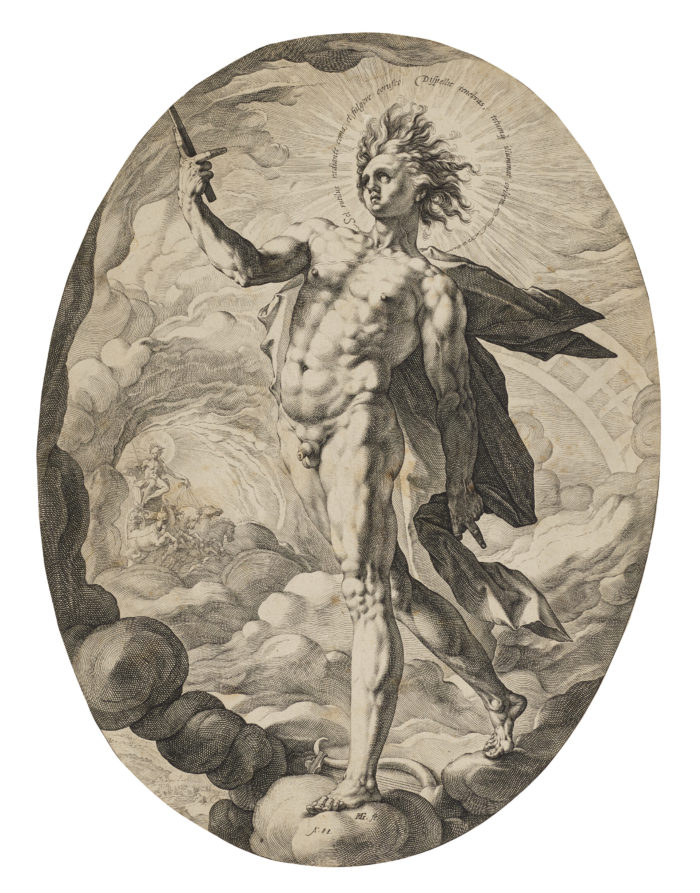Apollo
HENDRICK GOLTZIUS (1558-1617)
Apollo
engraving, 1588, on laid paper, without watermark, trimmed to or on the borderline, some pale foxing and staining, some minor defects, otherwise in good condition. Literature: Bartsch 141; Hollstein 131; Strauss 263; New Hollstein 151, Sheet 346 x 258 mm.
A very fine, rich impression of the first state (of two).
PROVENANCE:
Frstlich Hohenzollern’sche Museum, Sigmaringen (Lugt 2759).
Goltzius was at the height of his fame as an engraver and publisher in 1588, the year of the Apollo engraving. The inscription here encircles Apollo’s head like a halo. Such a bravura play on the conventions of engraving is a hallmark of Goltzius’s Mannerist style.
Here are notes on this print from the RISD publication and exhibit The Brilliant Line:
By the 1580s, Hendrick Goltzius had radically altered the engravers formulas for producing shape, volume, and tone. Rather than a single contour around the figure, here lines terminate to form the figures outline. Lozenges made from crossed swelling lines on Apollos body are interspersed with dots to moderate the transition from dark to light. Also evident is the s-curve, a mark used by Albrecht Drer, but now swelled to follow the complicated volumes of clouds and activate the surface with swirling movement. Goltziuss inventiveness as a calligrapher is also on display in the inscription around Apollos head, which describes the Sun Gods ability to dispel shadows and illuminate the globe.
The exaggerated musculature of the sculptural Sun God and the twisting bands of clouds around the figure were inspired by the style of Bartholomeus Spranger, court artist to Emperor Rudolf II at Prague, whose drawings were sent to Haarlem.
